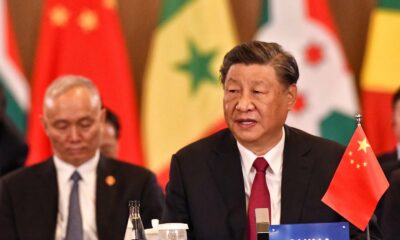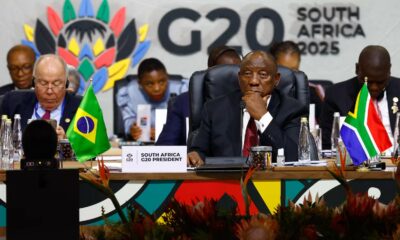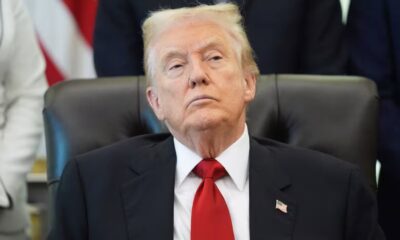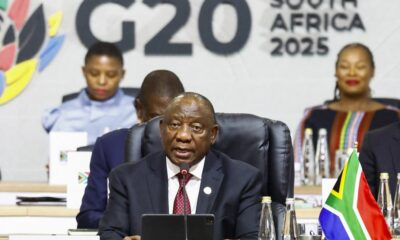Business
Trump’s 30% Tariff on South Africa: A Brutal Blow or the Push We Needed?
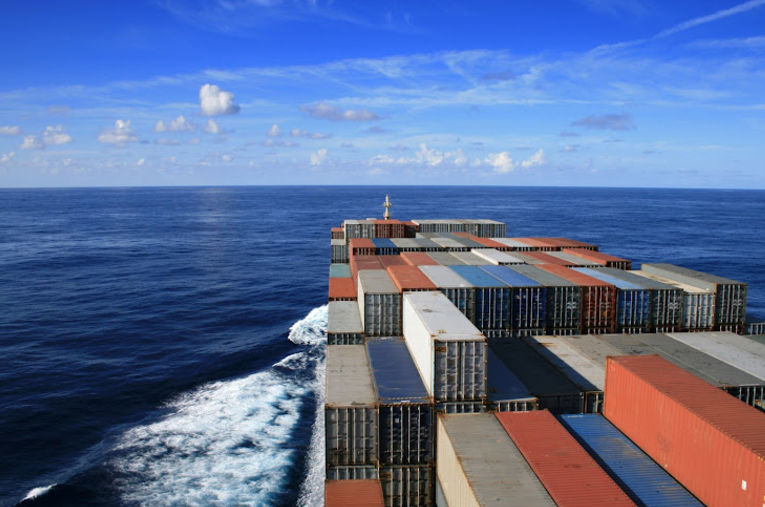
A blanket tariff on all South African goods exported to the United States signals a bigger problem — and a bigger opportunity.
On August 1, 2025, South African exporters were hit with the kind of news that sends boardrooms into panic and government departments into overdrive: a 30% tariff slapped on every product bound for the United States. No negotiations. No exclusions. No warning beyond a political rumble in Washington.
But this wasn’t just a trade penalty. It was a geopolitical muscle-flex and possibly the final shove South Africa needs to break free from outdated trade dependencies.
A Political Power Move, Not a Trade Dispute
Let’s be clear: this isn’t about faulty goods or missed quotas. The Trump administration justified the sweeping tariff by citing a trade imbalance, a R70 billion export surplus in South Africa’s favour in 2023, largely from citrus, cars, and minerals.
In a world of trillion-dollar economies, this imbalance is small change. But the real motivation seems closer to US domestic politics than economic necessity. Facing midterm pressure and eyeing battleground states where unions fear foreign competition, Trump’s team reached for a favourite tool: economic punishment dressed as policy.
It’s a move with echoes of past playbooks, unilateral, broad-brushed, and indifferent to diplomatic niceties. This time, however, the implications for South Africa’s economy are more severe.
Why This Hurts, Especially Now
South Africa’s automotive sector, which contributes over 4% of GDP and sustains 110,000 jobs, will be one of the hardest hit. The US is a top destination for assembled vehicles and components, and any cost spike threatens competitiveness.
Early murmurs suggest manufacturers may relocate production to the US to dodge tariffs, incentivised by promises of faster regulatory approvals. That’s more than just a job risk, it’s a warning that local value chains could unravel.
The irony is almost poetic: South Africa currently holds the G20 presidency, a platform meant to champion fair global development. And yet, here we are, on the receiving end of raw economic power with zero multilateral oversight.
What About Agoa?
No, this tariff isn’t tied to Agoa (the African Growth and Opportunity Act), which governs preferential trade with the US. But it’s a reminder of how fragile preferential access really is. Past threats, like the infamous 2015 poultry dispute, showed that even codified trade perks can be reshaped by shifting political winds.
Today’s lesson is sharper: the pen that grants access can just as easily take it away.
The Double Standards of Global Trade
Critics in Washington say South Africa imposes regulatory barriers and local content rules. That’s true, but it’s also allowed under World Trade Organization (WTO) rules. In fact, the US itself shields its industries with agricultural subsidies, defence contracts and steel tariffs.
The outcry isn’t about fairness. It’s about who has the power to define fairness and who doesn’t.
A Deeper Problem: Fragile Trade Exposure
Trump’s tariff didn’t create the problem; it exposed it.
South Africa’s economy still leans heavily on US, EU, and Chinese demand. That’s not diversification, that’s dependency with different accents. Add in carbon border taxes from Europe and softening commodity demand from China, and the external risks start stacking up fast.
And let’s not pretend this is just about tariffs. Back home, the same weaknesses keep dragging our economy down: power cuts, crumbling rail lines, underperforming ports, and a growing mismatch between industry needs and workforce skills.
No trade deal can fix that. But a real reindustrialisation strategy could.
This Is Our Inflection Point
South Africa can either hunker down and hope the next US administration takes a softer approach or it can pivot.
That doesn’t mean isolationism. It means smart, targeted economic resilience. It means negotiating from a position of strategy, not submission.
Already, signs of a pivot are visible. Trade with BRICS+ nations now rivals that with Western blocs. In 2024, over 22% of South Africa’s exports went to BRICS+ partners. The African Continental Free Trade Area (AfCFTA), if implemented properly, could rewrite the rules of intra-African commerce.
The infrastructure isn’t perfect, but it’s growing and it’s ours.
What Parliament Must Do Now
The tariff may be an American policy, but the response must be South African. This isn’t just a bruising, it’s an opening. Parliament, Treasury and trade officials need to treat this as a strategic shift, not a temporary disruption.
We need to fast-track AfCFTA implementation, streamline trade corridors, fix our logistics, and align our industrial policies with high-growth sectors.
The World Bank estimates AfCFTA could lift 30 million people out of poverty by 2035. That’s not a theory it’s a lifeline. But it won’t happen if we keep treating trade as a favour from rich countries.
Resilience Over Retaliation
We don’t need to retaliate with mirror tariffs. We need to build a trade policy that isn’t held hostage by the next US election. That means diversifying markets, strengthening value chains, and investing in home-grown production capacity.
It means moving from trade adolescence to trade maturity, not by rejecting the global system, but by learning to navigate it with clarity, strength and long-term vision.
This 30% tariff may be Trump’s call, but the next move is ours.
{Source: IOL}
Follow Joburg ETC on Facebook, Twitter , TikTok and Instagram
For more News in Johannesburg, visit joburgetc.com



